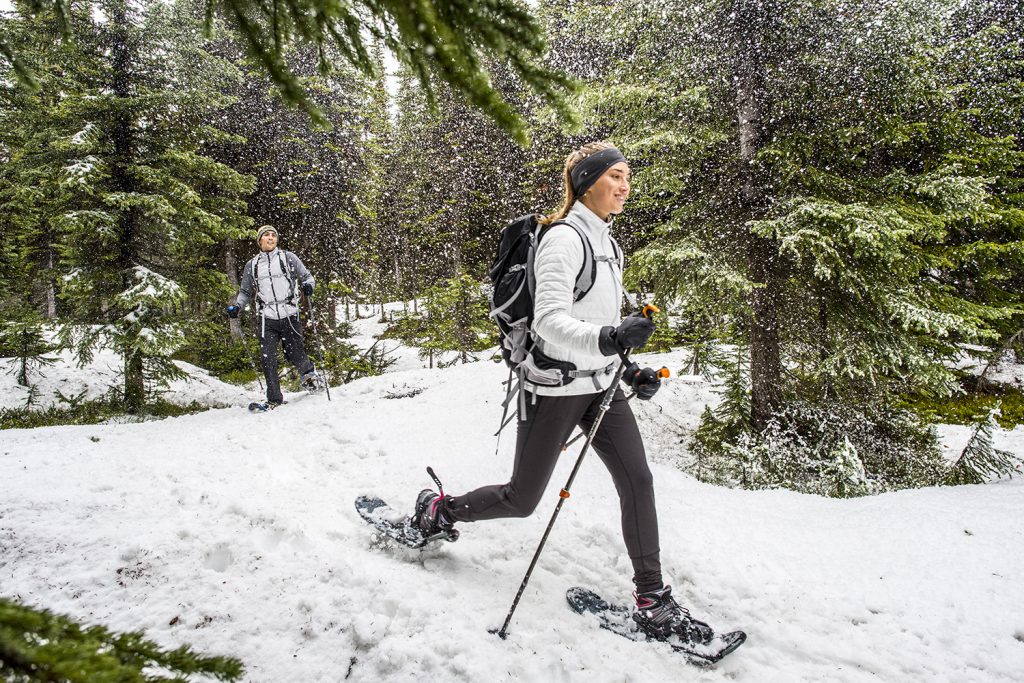If the thought of winter’s shorter days and freezing temperatures makes you want to grab a fleece blanket and go into hibernation on your couch, you’re not alone. It’s the time of the year when people tend to gain body fat, skip workouts, and just feel generally blah. But, if you’re an outdoor athlete or even just a weekend warrior looking to amp up your fitness level, cold-weather workouts provide a ton of benefits and prepare you for your spring and summertime adventures.
Here are five things to keep in mind this winter when you’re faced with the inevitable decision of choosing between another afternoon of binge-watching or going for a run:
1. Cold-weather training is good for you!
Training in the cold may take an extra bit of motivation, but ultimately, it’s good for you. Specifically, winter’s lack of sunlight means your Vitamin D level decreases, leaving you a bit more lethargic than in the summertime. Going outside and training can combat this: It boosts your levels of serotonin and gets those feel-good endorphins going.
What’s more, when you work out in colder temperatures, your body has to spend extra energy in order to stay warm. This fires up your metabolism and burns more calories at the same time. Additionally, this approach taxes your lungs (ever notice that it’s more difficult to breathe?), which can improve overall athletic performance.
Finally, you can’t discount the mental edge you’ll experience. Ever see Rocky IV? To recap, he goes out and runs through the frozen Siberian landscape, where he chops down trees and pulls sleds to get lean and mean for his fight. Why? Because physical activity in colder temperatures builds good, old-fashioned grit.
2. Layering is key
Before you step out into sub-freezing temperatures, make sure you’ve layered up properly. Keep in mind that, rather than find yourself shivering, you can always ditch the outer garments if you get too hot.
To start, wear a synthetic base layer to wick sweat away, followed by a mid-layer and a windproof outer shell, and you’re good to go. Also, don’t forget to protect your extremities and cover your neck and head, as this is where much of your body’s heat is lost.
3. Warming up beforehand is critical
One of wintertime training’s major drawbacks is that it leaves you much more injury-prone than in warmer conditions. Tight muscles coupled with icy roads are a dangerous combination. So, to combat this, you need to rev-up your body temperature and loosen up before you start training with any intensity. Use dynamic stretches, such as twisting lunges, knee-to-chest movements, high kicks, and jump squats, to activate your muscles and to elevate your heart rate beforehand.

4. Get creative with your workouts
Doing things outdoors is supposed to be fun, right? So what if it’s 20 degrees? Get out there and be creative! The wintertime offers exercise opportunities that just aren’t there any other time of the year because of—you guessed it—snow. So, use it to your advantage. Snowshoeing and cross-country skiing are both excellent cardio workouts that’ll test your lungs and your legs. Ice skating, downhill skiing, and snowboarding will, too, if you’re willing to push yourself. And, of course, there’s still running.
Winter also offers a chance to try a new sport. As one approach, sign up for an ice climbing, mountaineering, or another class at an Eastern Mountain Sports School.
5. Make sure you hydrate and stretch
If you’re properly bundled up, you’re going to sweat. So, it’s important to hydrate before, during, and after your workout. Heat up a little water before you go, and take it with you in a bottle. Then, after training, use static stretching to keep your muscles loose as you transfer from the cold to the warmth inside.
Do you have any favorite winter workouts?
Lucas Kelly
Luke Kelly is a writer and landscape photographer from Red Hook, NY. He says he’s a traveler first, having spent four summers working as a fisherman in Alaska to fund his adventures across the globe. His main goal is to inspire people to get outside, be active, and to explore new places. When he’s not out taking pictures, Luke can usually be found on his paddleboard, road bike, or skis depending on the season. You can follow his trips on Instagram @lukekellytravels.
Related Posts
April 2, 2024
10 Tips for Mountain Biking Etiquette During Mud Season
One rough spring could ruin the…




